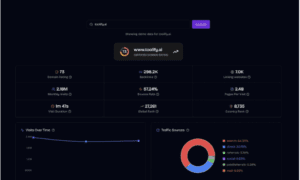What if your energy bill worked like your music subscription — adapting to your habits, peak hours, and even lifestyle? That vision is edging closer to reality as the UK energy market begins experimenting with flexible, usage-based pricing models designed to mirror the personalisation trend seen across digital services.
While most households are still on traditional fixed or variable tariffs, a wave of “smart” deals now allows users to shift their energy consumption patterns and pay less when the grid is less busy. These customisable plans, powered by smart meters and real-time data, could soon replace the one-size-fits-all structure that has dominated the industry for decades.
Tim Bailey, Head of Partnerships at Free Price Compare, believes this innovation could change how consumers think about energy:
“Personalisation is everywhere — from playlists to shopping — and energy is finally catching up. The difference is, here the rewards aren’t just convenience, they’re financial. When customers can align their energy use with lower-rate periods, everyone benefits: the grid, the planet, and their wallets.”
How flexible energy pricing works
Under the current system, most households pay a flat rate per kilowatt-hour, regardless of the time of day. But with smart meters now installed in more than 57% of UK homes, suppliers can introduce dynamic pricing — where rates fluctuate hourly based on national demand.
Imagine being able to automatically run your dishwasher, charge your car, or heat water during cheaper hours, all tracked by a digital platform. It’s the same logic behind Spotify suggesting songs you’ll like — algorithms predicting your habits and optimising your experience.
Some suppliers already offer “time-of-use” or off-peak tariffs, allowing users to benefit from lower overnight or weekend prices. Others are piloting tariffs linked to renewable output, rewarding customers who shift usage to sunny or windy periods when green power is abundant.
The tools making energy personal
Customisable energy requires better data — and that’s where digital tools come in. Platforms such as Free Price Compare are developing smarter interfaces that let users track, calculate, and optimise consumption just like managing a subscription plan.
Using an energy bill calculator, households can see how much they spend across different times or appliances. They can then explore flexible tariffs tailored to their behaviour — whether they’re working from home, charging an EV, or running a heat pump overnight.
Bailey explains:
“Data-driven comparisons are the next step. A calculator isn’t just about your current bill — it’s a personal budgeting tool. The future will be real-time: your energy app will tell you, ‘move your laundry cycle by two hours and save £1.50 today.’ That’s true customisation.”
Prepayment evolves into pay-your-way
Even prepayment meter tariffs — long associated with rigidity and higher costs — are beginning to modernise. Smart PAYG systems now let users top up via apps, monitor real-time credit, and even switch payment types without replacing their meter.
In time, these PAYG customers could access the same personalised plans as direct debit users. That’s crucial for fairness: historically, prepay customers have paid more despite being the most careful with consumption.
“Prepayment households often have the most to gain from flexible pricing,” says Bailey. “They already monitor their usage daily — smart technology simply makes that easier and more rewarding.”
Comparing energy the way you compare subscriptions
If energy is heading toward personalisation, transparency must keep up. Consumers will need simple ways to compare a growing range of flexible and dynamic tariffs. Traditional spreadsheets and price tables won’t cut it.
That’s where next-generation tools to compare energy deals come in. Instead of showing just price per kWh, platforms are starting to display when and how users can save. Some new algorithms even model your past usage to predict what you’d pay under each tariff type — similar to how Netflix’s algorithm recommends what to watch next.
Bailey added:
“The future of energy comparison is behavioural. It’s not just who’s cheapest overall, but who’s cheapest for you based on how and when you use energy. That’s a fundamental shift.”
The path to personal energy
Flexible energy isn’t without challenges. Ofgem still caps how far prices can vary, and not every household has the technology to take advantage of time-of-use models. Yet as data becomes central to every aspect of life — from health tracking to budgeting — consumers are ready for more personalised control.
This new model could also accelerate decarbonisation. By rewarding customers for shifting demand away from peak times, suppliers can reduce strain on the grid and rely less on fossil fuels during high-demand periods.
Bailey concludes:
“Energy is one of the last essential services not built around the customer. We’re finally seeing that change. Within a few years, your tariff could adapt to your life as easily as your playlist does. That’s good news for affordability, sustainability, and innovation.”

































